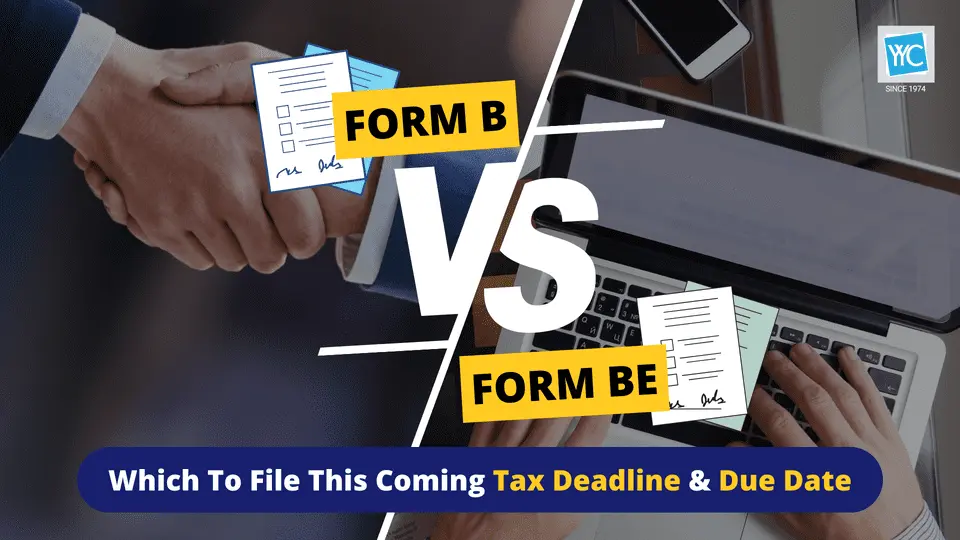Form B vs Form BE: Which To File This Upcoming Tax Deadline & Due Date

Are you undecided about whether to file a Form B or a Form BE? With the tax filing deadline approaching, it is crucial to determine which form to submit to the Inland Revenue Board (IRB). In this article, we will provide a comprehensive guide to assist taxpayers in determining which form to submit — Form B or Form BE?
What is Form B and Form BE?
Form B is an income tax return form for individual taxpayers who derive income from business activities, such as sole proprietors and partnerships. Taxpayers may declare their business income and expenses in Form B.
On the other hand, Form BE is an income tax return form for individuals with income from
non-business sources. This includes employees who receive salaries, retirees who receive pensions, and individuals earning investment income such as rental income.
Submission Deadline
The deadlines for submitting Form B and Form BE are different. Form BE for YA 2023 must be submitted by 30 April 2024, with an extension (grace period) until 15 May 2024 for e-filing.
As for Form B, the deadline is 30 June 2024, with an extension (grace period) until 15 July 2024 for e-filing.
What is Form CP500?
CP500 is a notification form issued by the IRB to request taxpayers who earn income other than employment income, such as from business, rental, and royalties, to make advance income tax instalment payments.
The instalment amount will be estimated by the IRB using CP500, and taxpayers will be notified at the beginning of each year. Taxpayers must pay the instalment twice a month, up to six times commencing from March every year.
Furthermore, it is important to note that the instalment amount stated in CP500 must be paid within the specified timeframe, which is within 30 days from the payable date. Failure to remit the tax instalment by the deadline will result in a 10% penalty being imposed on the outstanding balance.
Additionally, if a taxpayer disagrees with the tax estimate provided by the IRB, they may apply to revise the CP500 by submitting CP502 (Application Form for Amendment to Instalment Payments) before 30 June. The IRB will issue revised instalment payments to the taxpayer accordingly.
After the revision has been made, if the actual tax payable exceeds the revised estimate by more than 30%, the excess will be subject to a 10% penalty for underestimation of tax.
However, if you choose not to revise the original instalment payments provided by the IRB in the first place, you will not be subject to the penalty for underestimation of tax, even if the actual tax payable exceeds the tax estimate by more than 30%.
In Malaysia, the tax system is governed by a self-assessment framework, where taxpayers are responsible for accurately declaring their income. Hence, it is crucial to understand the difference between Form B and Form BE, along with the implications of CP500. Would you like to receive timely updates on tax changes? Subscribe to TaxPOD now to access decades of tax-saving knowledge at your convenience, anytime and anywhere. Visit https://taxpod.com.my now!
